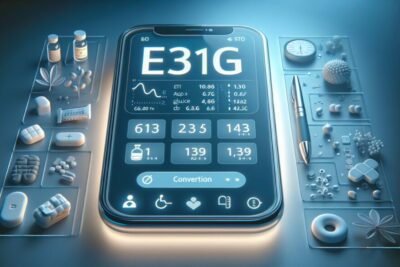
Diabetes management is an evolving field, and the concept of "Time in Range" (TIR) has emerged as a significant metric for individuals striving to control their blood glucose levels. As we delve into the essentials of TIR, we hope to offer insights that can help improve daily diabetes management and overall health.
Time in Range encapsulates the period during which blood glucose levels are within the target values. This measure is gaining recognition for its role in fine-tuning diabetes treatment and lifestyle adaptations.
🔍 Seeking a breakthrough in Type 2 Diabetes management?
Discover our expert insights and innovative approaches on ‘How to Cure Diabetes’.
Click to transform your health journey today!
What you\'ll find in this article?
- What is time in range?
- Why is time in range important for diabetes management?
- How to measure time in range?
- Tips to improve your time in range
- Time in range vs. A1c: which is better?
- Common challenges in maintaining time in range and how to overcome them
- Further questions about time in range and diabetes management
What is time in range?
The term Time in Range refers to the percentage of time an individual's blood glucose levels stay within target ranges. These ranges are typically set by healthcare providers based on factors such as age, type of diabetes, and overall health.
Continuous Glucose Monitoring (CGM) devices have made tracking TIR more accessible. By wearing a CGM, individuals can get real-time feedback on their glucose levels and how they fluctuate throughout the day.
Understanding TIR is crucial for those with diabetes as it provides a more nuanced picture of glucose control beyond what a single reading or A1C test can offer.
Monitoring TIR can empower patients with actionable data to manage their condition more effectively and make informed decisions about their diet, physical activity, and medication.
TIR is particularly beneficial in pinpointing glycemic variability, which can be a risk factor for diabetes complications.
Explore our specialized services in diabetes care 🌟.
From personalized diet plans to effective exercise routines, we have what you need to take control of Type 2 Diabetes.
Visit our services page now!












Why is time in range important for diabetes management?
Maintaining a good Time in Range is associated with reducing the risk of diabetes complications. Research has shown that higher TIR correlates with fewer instances of hypoglycemia and hyperglycemia, both of which can be dangerous if not managed properly.
By focusing on TIR, individuals can potentially improve their quality of life. Stable blood glucose levels may lead to feeling better day-to-day and having more energy.
The American Diabetes Association supports the use of TIR as a complementary metric to A1C for a comprehensive understanding of glucose control.
TIR also emphasizes the importance of individualized goals. Diabetes management is not one-size-fits-all, and TIR allows for a tailored approach to care.
For health care providers, TIR offers valuable insight into the effectiveness of treatment plans and can guide adjustments for better outcomes.
How to measure time in range?
Measuring Time in Range generally involves the use of a CGM system. CGM devices provide continuous feedback on glucose levels, allowing for a detailed assessment of the time spent within, above, or below targeted glucose ranges.
The process of measuring TIR can be broken down into several steps, starting with the proper setting of target glucose ranges in consultation with a healthcare provider.
Once the target range is set, the CGM device collects glucose readings throughout the day and night, usually at regular intervals.
Data from the CGM can then be analyzed to determine the percentage of time spent in range, as well as patterns that may suggest a need for alterations in treatment.
Patient engagement with their CGM data is crucial, as it involves actively reviewing and responding to glucose trends.
Tips to improve your time in range
- Regular monitoring: Keep a close eye on your blood glucose readings to identify patterns and make informed adjustments.
- Adjust your diet: Focus on a balanced diet that helps stabilize blood sugar levels.
- Exercise: Engage in regular physical activity, which can improve insulin sensitivity and glucose uptake.
- Medication adherence: Take your medications as prescribed to maintain consistent blood glucose levels.
- Stress management: Reduce stress, as it can have a significant impact on glucose control.
- Seek professional advice: Work with your healthcare team to refine your diabetes management plan.
Time in range vs. A1c: which is better?
The debate between Time in Range and A1C as the superior metric is ongoing. A1C tests provide a long-term overview of glucose control by measuring the percentage of hemoglobin coated with sugar.
TIR, on the other hand, offers real-time insights and can capture daily fluctuations in glucose levels that A1C might miss.
While A1C is a valuable indicator of overall diabetes control, it may not reflect short-term variations and the risk of hypoglycemia.
A1C also has limitations in individuals with conditions that affect hemoglobin, such as anemia or sickle cell trait.
Ultimately, both TIR and A1C have their roles in diabetes management, and a combination of these measures is often the most effective approach.
Common challenges in maintaining time in range and how to overcome them
Common obstacles to achieving an optimal Time in Range include lifestyle factors, lack of access to technology, and the intricacies of diabetes itself.
To overcome these challenges, education on the impact of dietary choices and physical activity on glucose levels is vital.
Access to CGM technology is also expanding, making it easier for patients to track their TIR. Financial assistance programs can help offset costs.
Understanding the individual nature of diabetes is crucial. What works for one person may not work for another, so personalized treatment plans are essential.
Regular consultations with healthcare providers can ensure that treatment strategies are up-to-date and effective.
Peer support and online communities can offer practical advice and emotional support, helping individuals stay motivated.
Further questions about time in range and diabetes management
How to calculate time in range?
To calculate Time in Range, you must first establish your target glucose levels with your healthcare provider. Then, using data from your CGM, determine the percentage of time your readings fall within these targets.
Most CGM devices and apps will automatically calculate TIR for you, providing reports that can be reviewed with your healthcare team.
Is time in range better than A1C?
While Time in Range offers more immediate and actionable data, A1C provides a longer-term overview of glucose control. Both metrics have their advantages, and using them together can give a comprehensive picture of diabetes management.
What is time in range guideline?
The guideline for Time in Range typically suggests that individuals with diabetes should aim to keep their blood glucose levels within their target range for at least 70% of the time.
What is the tight time in range?
"Tight" Time in Range refers to stricter control of blood glucose levels, often pursued by individuals aiming for near-normal glucose levels. This approach requires careful management and frequent monitoring to prevent hypoglycemia.
✨ Other articles you might be interested in:
- Essential Freestyle Libre2 troubleshooting information for users
- Exploring Smart Insulin Pens: Functionality and User Experiences
- EAG/A1C Conversion Calculator: Understanding Your Blood Sugar Levels
- Understanding Insulin Pens | ADA's Guide to Usage and Selection
- Understanding Insulin Pumps: Relief and Choice for Diabetics



